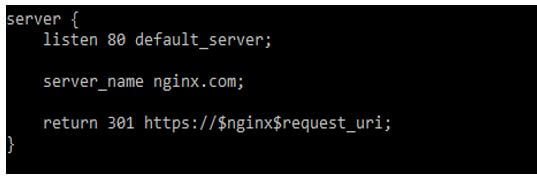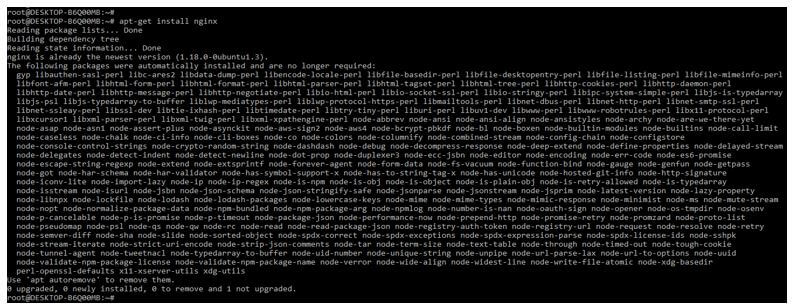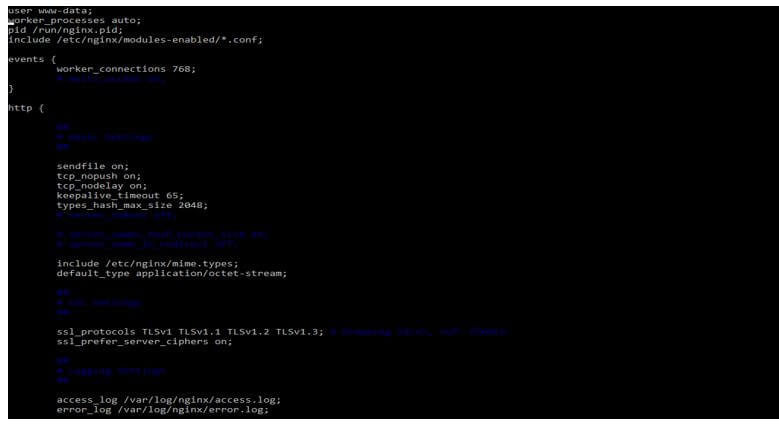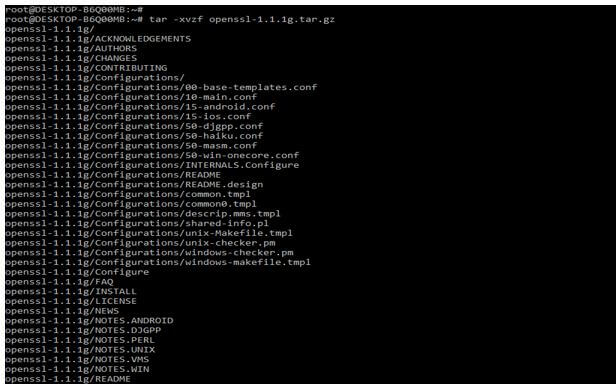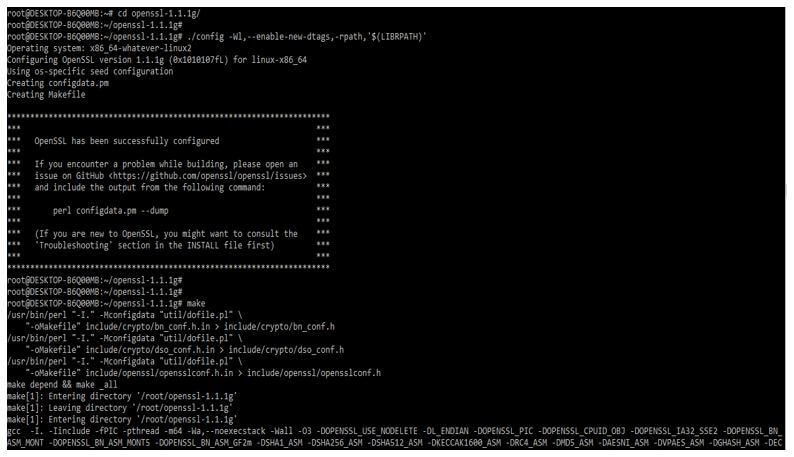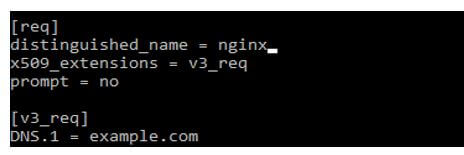Updated March 13, 2023

Introduction to Nginx Force HTTPS
Nginx force https is the Linux-based application proxy and web server; as we know that nginx is a powerful tool for managing and redirecting traffic. We can easily configure the nginx to redirect the unencrypted web traffic of http for an encrypted https server. For forcing an http to the https, we need to edit the configuration file of nginx, we need to add code into the configuration file.
Overview of Nginx Force HTTPS
In nginx it is the common task to redirect the request from http to the https, basically, our application and sites are always using the certificate SSL. In nginx, we are avowing using the if statement. It is similar to that how we are redirecting between the www domain and the domain which does not contain the www. In nginx, we are using a server block for redirecting the request from http to https.
The https request is listening on port 80. We are using port no 80 to the default server. We can assume that it is only the server block that was listening from port no as 80. Below is the sample example of the nginx force https server directive as follows. In the below example, we can see that we have used the server name nginx.com. Also, we have defined the return request as 301 which was used to redirect the version of which URI we are using into the request.
Code:
server {
listen 80 default_server;
server_name nginx.com;
return 301 https://$nginx$request_uri;
}Output:
By using it, we can redirect the specific request also. While using redirecting specific requests it is better if we have multiple sites and not all the sites will be forced to use the certificate SSL. We are using specified requests in the request type. Suppose we have force specified https request.
How to Use Redirect Nginx Force HTTP to HTTPS?
The below steps show how we can use nginx to redirect force http to https. For redirecting the http to https, we need to install nginx in our system.
1. In the first step, we are installing the nginx server. We are installing the server of nginx by using apt get command on the ubuntu system. Suppose we are using another Linux flavor then we can also use rpm or yum command to install the nginx server.
Code:
apt-get install nginxOutput:
2. The nginx server is not started by default. We are starting the same by using the following command. In the below example we can see the version of the nginx server and also we can see the module which is included in the nginx server.
Code:
service nginx start
service nginx status
nginx –VOutput:
3. After starting the nginx server now, we are opening the configuration files for redirecting force https to https as follows.
4. Now, we are redirecting all http requests to the https as follows.
Code:
server {
listen 80 default_server;
server_name example.com;
return 301 https://$example$request_uri;
}Output:
5. Now, we are redirecting specific http requests to the https as follows.
Code:
server {
listen 80 default_server;
server_name example.com;
return 301 https://$example.com$request_uri;
}Output:
6. Now, we are checking the syntax of the config file and taking restart the nginx server. We are checking the syntax of the configuration file by using the nginx –t command.
Code:
nginx –t
service nginx restartOutput:
Nginx Force HTTPS Configure
As we know that nginx is a flexible and high-performance web server.
To configure the nginx force https, we need to follow below steps as follows:
1. Before the nginx forces http to https migration, we need to install an SSL certificate on our system. The certificate is used to encrypt the traffic; for creating the certificate, we need to install openssl in our system.
Below we are installing openssl as follows:
Download the Openssl:
Code:
wget https://filenameOutput:
Extract the files:
Code:
tar -xvzf filenameOutput:
Install openssl:
Code:
make
make installOutput:
2. After installing the openssl in this step, we are generating the self-signed certificate as follows.
Create directory and open_ssl.conf file
Code:
mkdir ssl
touch open_ssl.confOutput:
3. After creating the configuration file, now we open the file and add the following content to it.
Code:
[req]
distinguished_name = nginx
x509_extensions = v3_req
prompt = no
[v3_req]
DNS.1 = example.comOutput:
4. Now, we are creating the server block into the nginx configuration file. In the below example, we are using a specified website.
Code:
server {
listen 80 default_server;
server_name example.com;
return 301 https://$example.com$request_uri;
}Output:
5. Check the syntax of the config file and take restart of nginx server as follows.
Code:
nginx –t
service nginx restartOutput:
Nginx Force HTTPS Server
For the nginx force https server, we need to add the configuration into the server directive. We need to add the following configuration into the server directive of the nginx configuration file. The listen 443 will instructs that catch all traffic on port 443.
Code:
server {
listen 443 ssl default_server;
server_name nginx.com;
}
server {
listen 443 ssl;
server_name nginx.com;
}Output:
In the above example, we are using the ssl port as 443. And using the server name nginx.com. We are using the specified websites and will listen from the port, not 443 only. After adding the configuration, we need to check the syntax of the config file and restart the nginx server as follows.
Code:
nginx –t
service nginx restartOutput:
Conclusion
The https request is listening on port 80. We are using port no 80 to the default server. Nginx force https is the Linux-based application proxy and web server; as we know that nginx is a powerful tool for managing and redirecting traffic.
Recommended Articles
This is a guide to Nginx Force HTTPS. Here we discuss the introduction: how to redirect nginx force HTTP to HTTPS? configure and server. You may also have a look at the following articles to learn more –
